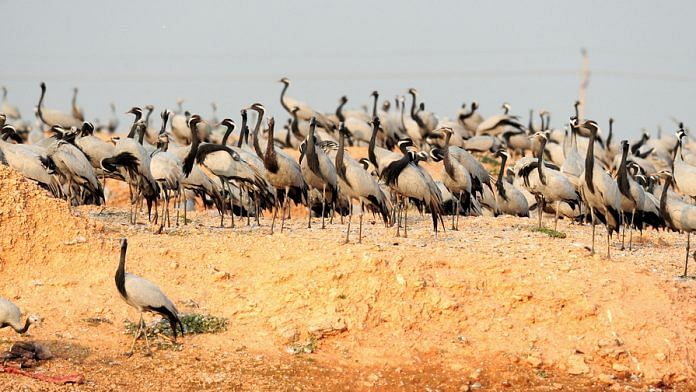Somewhere on the edge of Thar desert in Rajasthan, this is how the day starts. The incessant `krok-krok-krok’ sound coming from all around, almost replicating an eco-chamber effect, followed by the appearance of thousands of mysterious figures up in the grey sky. The uncertain morning light hides more than it reveals, while the sun still lazing in the background make them look like overgrown bats. And then, they start descending right in front of you.

But don’t get unnerved or try to take shelter in a hurry. These are the fabled demoiselle cranes, the smallest cranes in the world, and it’s all happening here in the village which goes by the name of Kheechan, which has been providing protection, shelter and food to the cranes for well over 40 years now. These are the guests from Central Asia. Very few places can boast of this kind of bonhomie between humans and birds. What started as a small gesture of kindness decades ago has now grown into an unbreakable sacred connection. One has to come here to see and feel the bond.
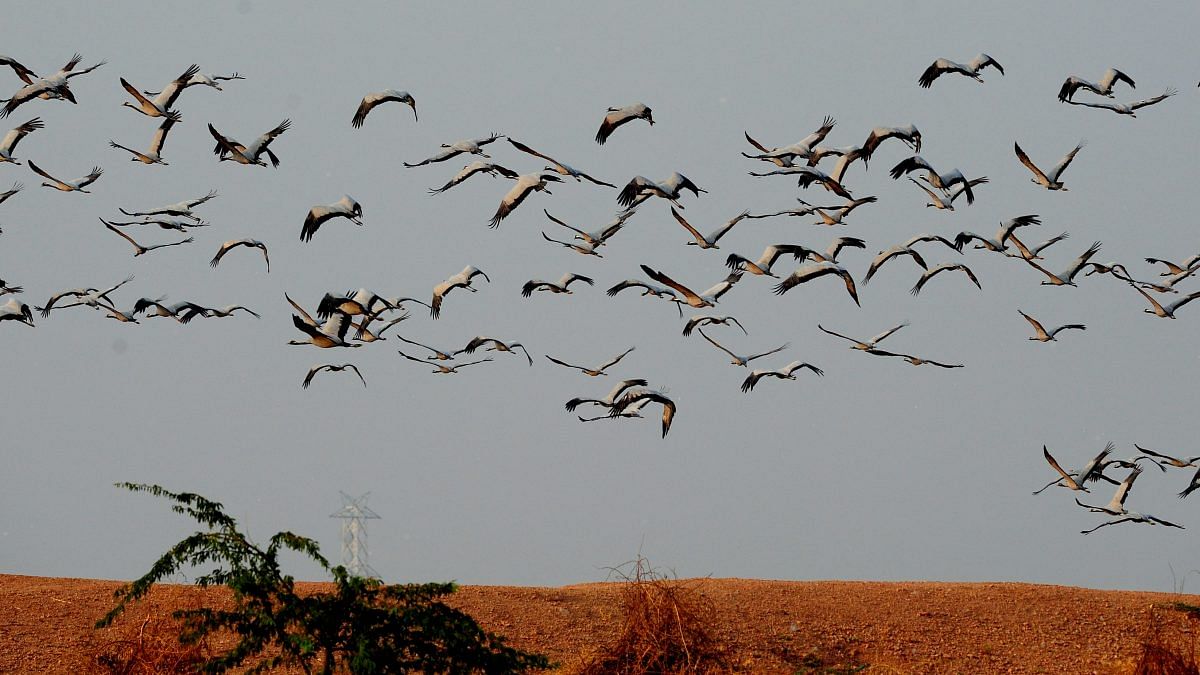
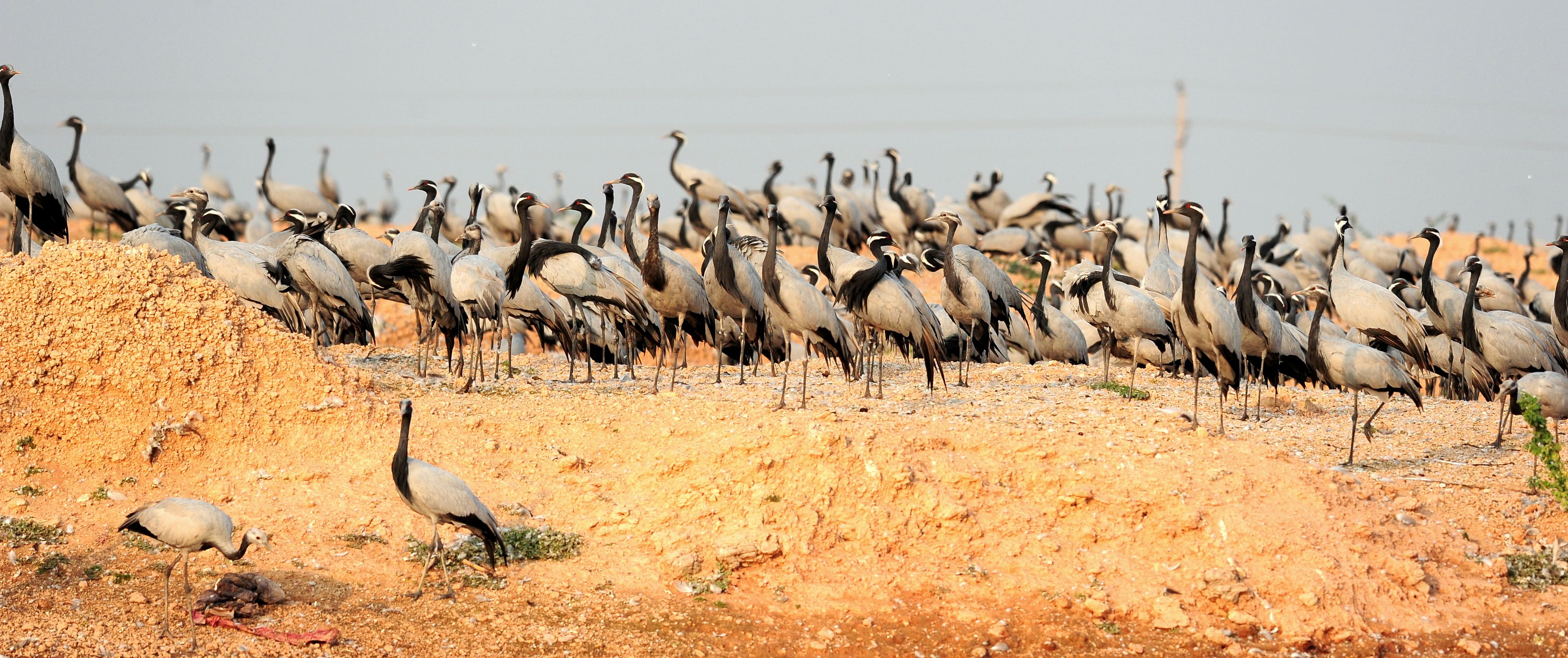
You would, of course, assume this place to be near Bharatpur, that rockstar of a bird sanctuary and often touted as one of the finest in the world. But the only similarity Kheechan has with Bharatpur is that the two happen to be in the same state- Rajasthan, in North-West India. Otherwise, they are poles apart in colour, contour and character. Though unparalleled in beauty and diversity of bird-life, as also hugely popular, Bharatpur has been done to death by tourists, picnickers and the usual gang of Delhi-Agra-Jaipur tour operators (it’s roughly 45 minutes away from the Taj Mahal). Kheechan, on the other hand, is for the connoisseur who is searching for that ever-receding link between the man and the environment. It’s one of those very few places left on the Earth where the link has been strengthened by the force of sheer public resolve, with minimum or no Government intervention.
A small, nondescript village in the Thar desert zone of Rajasthan, Kheechan is nothing less than a marvel. The wonder of Kheechan started unfolding decades ago. This happened after the people of the village extended their kindness to the large groups of migrating demoiselle cranes which pass through this region every winter.
It’s a fascinating story, actually, about how the people of Kheechan began bonding with the cranes. The trigger was a single decision made by the residents of the village, which was that each household would keep aside part of its agriculture produce for the cranes. That promise is honoured to this day.
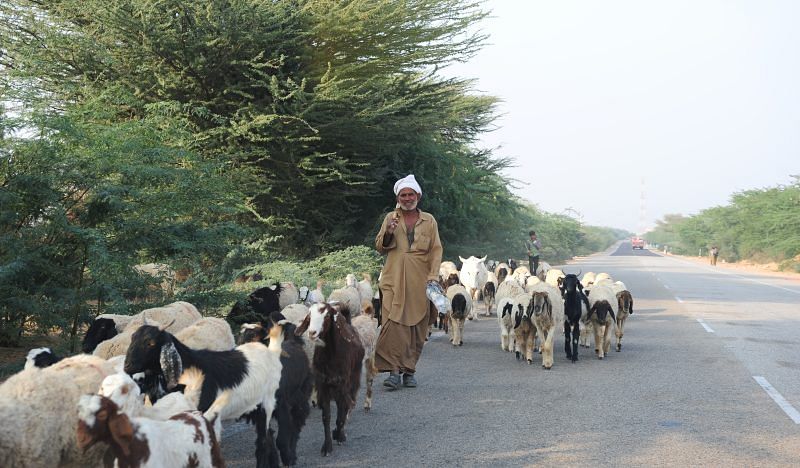
It goes to the credit of Ratanlal Maloo and his family to bring about the remarkable transformation of Kheechan. They were the ones who first started feeding the visiting cranes. This was sometimes in the 70s. Soon the idea was lapped up by the entire Kheechan village. A few years later, observing that every year more and more cranes had started coming to Kheechan, the village administration earmarked a feeding place for their winged guests.
Driving on the highway, we had bit of a problem locating Kheechan. This shepherd herding his goats and sheep readily came to our assistance. He told us he was from Kheechan, and then added with a smile, “I know the Maloo family very well.’’ That was a good beginning, we thought, after shaking hands with him.
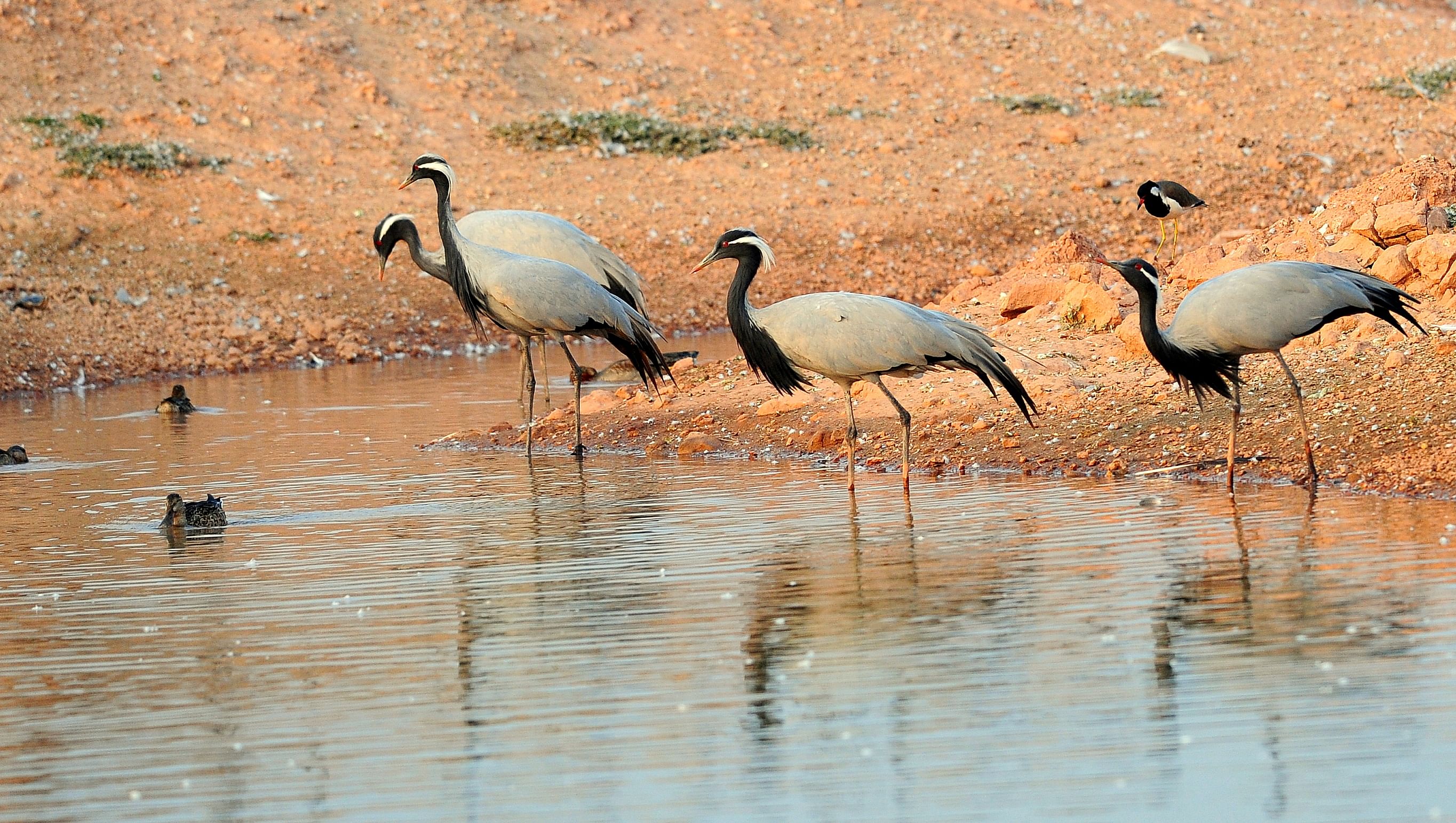
In the initial years, only a few hundred demoiselle cranes would descend upon Kheechan. But soon their numbers swelled to 20,000- plus every year, a testimony to the power of unconditional love and caring.
Earlier, while escaping the harsh winter of Iran, China and Central Asia, the demoiselle cranes would come to Kheechan only for a couple of months beginning November. But now, ostensibly spoiled by the hospitality and the choice of bird food, they more or less stay here from August to March.
The feeding place for the birds, locally referred to as `pakshi chugga ghar’, is the star attraction of Kheechan. Every evening, some 10 quintals of grain are spread out for the cranes as their next morning feed. What started decades ago as an act of love and caring for the cranes has now become a sacred daily ritual.
No wonder, Kheechan is now on the radar of almost any serious birding enthusiast. And they troop down here from all over the world.

Situated in the Phalodi district of Rajasthan, the village of Kheechan falls roughly midway between the two hugely popular cities of Jodhpur and Jaisalmer.
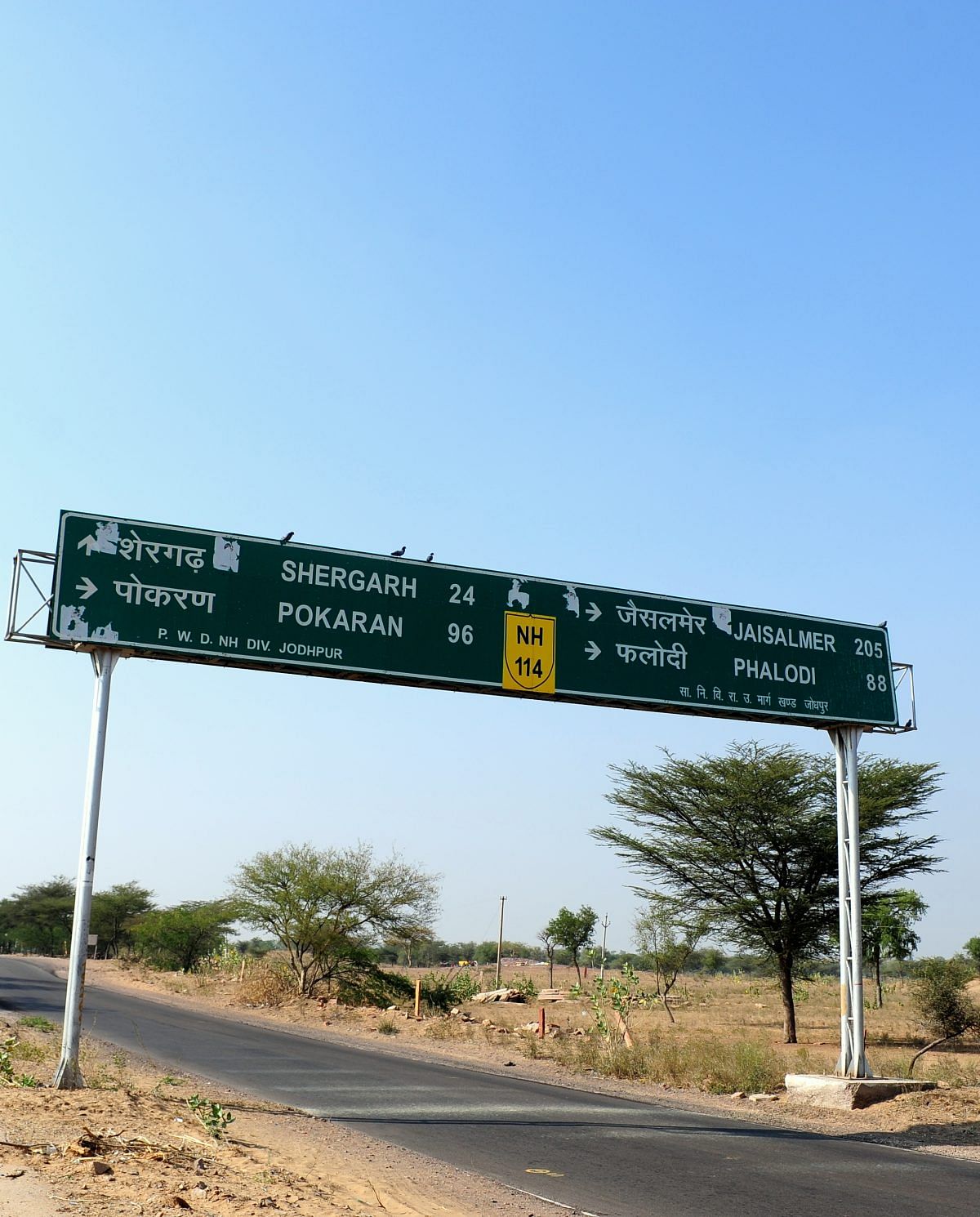
This is also the region of blackbuck, and of the stories about how the people here would go to any length to protect the beautiful deer. Woe unto him who tries to lay a finger on the revered blackbucks (a few Indian celebrities, having burned their fingers badly for allegedly hunting blackbucks in this part of Rajasthan, are still smarting under the wounds of retribution).
Arriving at Kheechan may not be a cakewalk, but it’s not all that difficult either. A song in the heart and love for the birds are the two pre-conditions for falling in love with it, actually. Don’t expect fancy hotels and resorts with manicured gardens in this medieval looking village. And please, don’t even think of coming here if clicking `head on’ photographs of tigers, lions or rhinos is your abiding interest. If that’s what is on your mind, I would tell you where all to go.
This article was originally published in Tigers and Beyond
Also read: The woman forest guard who stared a tiger down for 90 minutes, and lived to tell the tale



